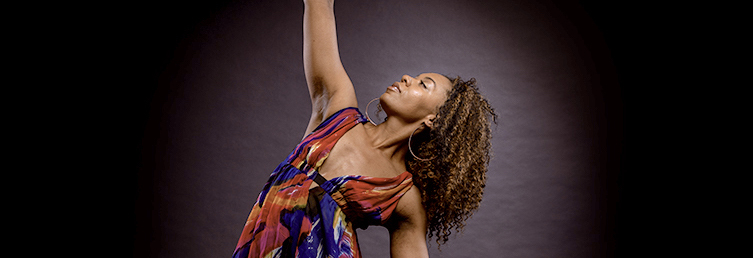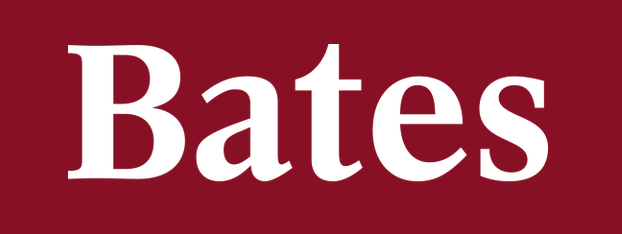Call It What It is
by Ashley Chavonne
When was the last time you were asked to use your imagination?
I called up a few friends, posed this question and the answers were all the same, “I have no idea.” My friends: Lauren; dancer, choreographer and educator. Kristina; director, choreographer and NYC based freelance performer. Leah; sister-friend, dancer, arts educator, fitness professional and artistic director. Britney; mid-30s, she/her, NYC hospitality professional and lover of all things beautiful. Afaliah; Ohio State Alum, New York University Steinhardt dance education alum, Rennie Harris Pure Movement alum, and professor of dance. And then there’s me, Ashley; performer and teaching artist who’s been encouraging children to use their imagination through theater for young audiences for years.
It seemed the word imagination had lost its place in our adult lives. If I’m being honest, the word had all but vanished by our teens. But it couldn’t be. Given our relationship to art and performance, how could this word evade us? Curious, I went back to basics and consulted Merriam-Webster. Webster’s defines imagination as “the act or power of forming a mental image of something not present to the senses or never before wholly perceived in reality.” It also goes on to say, “fanciful or empty assumption”, but we’ll get to that later. It occurred to me that maybe imagination hadn’t left us but the language had changed. Its brand developed to keep up while we grow up. We envision the future. We unlock our creativity. We’re manifesting our destiny with intention. Sound familiar? But what happens to “imagination”??? That’s this lesson. Let’s discuss the brand of imagination in its life cycle from development to decline.
Development: The Mission Statement
“Our mission is simply this, to capture the rich beauty and simplicity of the human imagination.” – Ashley
This is where it’s easy. The refrigerator box spaceship. The paper towel roll spyglass. Barbie enjoying a lavish lunch at the pizza stool table that came with dinner. Diving into an ocean of blue and white pillows from the sofa and off to your next underwater adventure. It’s all so obvious and yet so elusive. Then things take a turn.
Introduction: Lauren’s Magic Paintbrush
“There’s a thing I do with the littles I teach…I’m gonna get out my magic paintbrush but in order to understand magic paintbrush, you have to have the best imagination! I’m painting a line, watch it come from your’s and look, it’s creating a purple line…all the way across to the other purple dot…this is your lane and nobody else’s.” – Lauren
Structure. Guidance. Form. This is the moment we learn to build creativity through imagination. We’re taught to embrace the freedom within the structure. We’re given resources for exploration and encouraged to exercise agency in our pursuits. The “creative” is beginning to emerge.
Growth: Kristina’s Versus
“…it’s like imagination being out-of-body and creativity being in your body, you know, tangible.” – Kristina
This is where we’ve learned to recognize it. By this point we’ve been introduced to prompts that encourage us to be creative, think outside the box, find inspiring imagery, maybe even invent something. Inspiration is everywhere, improvisation is inevitable and the challenge to create for the sake of, within the confines of, or in spite of is present. Imagination is over, ingenuity is in.
Maturity: Leah’s Assessment
“It doesn’t sound sophisticated to use imagination. Can you be great and use words like imagination?” – Leah
This is where it gets tricky. We’ve got creativity in our back pocket, ingenuity be thy name. Now it’s time to elevate the language. Maybe, inventiveness has produced the visionary. The prolific creator has emerged from groundbreaking efforts. *Insert more grandiose adjectives and hyperbole here*
Decline: Britney’s Hard News
“…I guess in more creative fields, you feel like it’s a given maybe? Like it’s taken for granted…it’s art, it’s imagination then people come in and take it very seriously and it becomes something bigger than itself. But the root of it, the start of it all is imagination.” – Britney
Expectation persists, deadlines beckon, sophistication swarms and smothers and potentially the idea of play fades away. The creativity and ingenuity that fueled the visionary have led to fanciful or empty assumption.
Yet somehow, even in decline, the foundation remains the same, “Imagination.”
The Challenge: Afaliah’s Manifesto
“We are forever changed by this pandemic. We are forever changed by the way we communicate and show dance, the way we create dance and so in that respect, I feel like our imagination and curiosity almost becomes limitless…” – Afaliah
What comes to mind when you hear the word imagination? If you’re being honest (and please do, this is a safe space) you were reminded of your childhood, right? Worlds of fantasy, playing in imaginary places, maybe imaginary friends . Things you couldn’t see, but truly existed in some way even if just for a moment. Boundless, limitless, personal. Sometimes so exciting, it needed to be shared. Enter language. Complicated, confusing and often restricting language. A necessary evil and occasionally, truly evil. This inherent and innate gift we’re born with, this simple and beautiful thing is, as most things natural or otherwise, subject to change. But can awareness of the cycle have the potential to help build the language necessary to keep it personal yet accessible? That boundless, limitless thought beyond the senses, remains if we call it by its name.
So the challenge dear artist/creator/dreamer/visionary/game-changer *insert favorite descriptor here* is this: Acknowledge the cycle, tend to the root, and from time to time try to remember to call it what it is, Imagination.
Ashley Chavonne, Detroit native, Brooklyn based performer and teaching artist is a graduate of The Ohio State University with a BFA in Dance Performance and BA in Strategic Communication. Her career spans a wide range of performance working with choreographers like Bebe Miller and Kathleen Hermesdorf, to former Co-Director of the Institute of Dunham Technique Certification Mme. Penny Godboldo, and Mandy Moore. She has been a guest artist with Detroit Dance Collective, The Next Stage Project with Jana Hicks and Marijke Eliasberg, ModArts Dance Collective, Lauren Bierne Danceworks and Vissi Dance Theater. Her teaching experience includes contemporary ballet and workshops in modern/contemporary and hip hop. She has also led creative movement classes and assisted with creative writing workshops for children through outreach initiatives in support of theater for young audiences. She is currently a performer and teaching artist for the Treehouse Shakers Dance Theater Company and a member of The Feath3r Theory.


